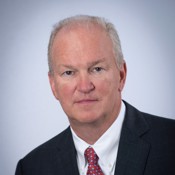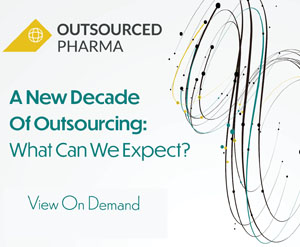View From Tokyo: Rise Of The "Values" Chain

By Louis Garguilo, Chief Editor, Outsourced Pharma

David Enloe sits high atop the abnormally quiet streets of Tokyo’s Akasaka district, in his apartment now doubling as his office.
From here he’ll ride out the coronavirus pandemic.
As the CEO of a CDMO with a global customer base, and development and manufacturing facilities in the U.S., Japan, India, and Europe, he has a lot to watch over.
Just today his San Diego-based company, Ajinomoto Bio-Pharma Services, announced it entered a manufacturing agreement with CytoDyn Inc., a late-stage biotechnology company, to supply an investigational new drug currently in clinical trial protocols for COVID-19 patients.
Even with so much at hand, Enloe took the time to comment on my recent editorial, Sign The “50 By 25” Declaration Of Drug Independence, and agreed to FaceTime about that editorial’s call to action:
‘We hereby dedicate ourselves to the goal of reducing U.S. dependency on foreign sources for drug materials, intermediates, substances, and finished products to 50% or less by the end of the year 2025.’
Traffic Cops
 “Like everyone else, some of the products we produce for our clients have a tendency for raw materials coming from China,” Enloe starts.
“Like everyone else, some of the products we produce for our clients have a tendency for raw materials coming from China,” Enloe starts.
“I just finished a call with a U.S. client,” he tells me, and I note the time: 9pm in Tokyo.
“Something I'm doing during this pandemic is talking to the CEOs or top CMC persons at about 20 of our customers, to ask: ‘What's really going to happen next with supply chain decision-making?’”
What traditionally “happens next,” says Enloe, is what keeps a large degree of materials-sourcing ensconced in China, quite the opposite direction many outside the industry are now calling for.
“The big-picture challenge today is the clients of CDMOs have so much to say in the specific raw materials and agents going into products,” Enloe says. “The liberty for us to source elsewhere is more constrained than you would imagine.”
“The U.S. in particular got ourselves into this position,” he continues. “Look at the synchronization with the life-cycle curve of our drugs. Our clients expect the cost of goods to go down over time, in order to keep profits up as sales slow, and generics or new therapies come out.
“Pharma nudges CMOs into certain supply-chain rationales based on cost, and therefore pushes us into China.”
To be fair to those drug makers, though, Enloe says we have to consider our entire health-care system.
Drug buyers like Medicare, the VA [U.S. Department of Veterans Affairs], even the DOD [U.S. Department of Defense], among others, negotiate on price first, “and that directs the entire system and sets expectations.”
“We work with the vast majority of the largest bio pharmaceutical companies in the world. While half of those may be based in Europe, the lion’s share of their income is also coming out of North America.
“So even if you're making supply-chain decisions with a European company, you're still asking, ‘What’s the Medicaid pricing going to look like?’ It drives materials sourcing.”
Enloe continues: “Consequently, across the board, CDMOs take on a high degree of risk in return for a tight window of profitability. Despite the value added through outsourcing development and manufacturing, because of these cost drivers, service-provider economics are tough.”
And those tough economics keep our supplies chained to China.
What Values?
The Wuhan coronavirus outbreak, the China Communist Party (CCP) mishandling of the situation, as well as numerous other negative behaviors, has combined to broker a virulent supply-chain debate around the world.
Perhaps we can go as far as saying discussion has elevated to a systemic questioning of drug-production morality.
Enloe gives that concept some thought.
He leans back from his FaceTime screen; I catch him do something I did years ago when living in Japan and thinking about China:
Unconsciously glance westward, over the narrow stretch of sea separating the two countries.
That habit started for me during the Tiananmen Square massacre many years ago. Perhaps this virus pandemic started it for Enloe.
When he returns his gaze, he says:
“This is a new kind of prioritization on drug development and manufacturing supply chains. Ten years ago, ‘supply chain’ wasn’t really a meaningful word for our industry. It was more about ‘procurement’ and ‘purchasing power.’
“But as we begin to broaden the definition, we'll need to further investigate all the way back to those raw materials, and not just focus as we have up the line to the value-added components.
“Again,” he says, “I refuse to beat up on the pharma companies. Yes, their robust income statements speak for themselves. But if you want to know about morality, that is why we can afford to spend all this research money on developing hundreds of potential new drugs, sometimes for a hyper-rare disease with few patients, or devote intense immediate energy to fighting a global pandemic like COVID-19.
“At this point in time, regarding reviewing supply chains, everyone is kind of dusting themselves off from this coronavirus pandemic, and first figuring out who can and can't go to work, what’s the right thing to do for our employees, and our patients who need the medicines we make every day.
“That being said, we have started discussions with most customers about what this means for the future. The economics, the politics, the sustainability, and perhaps even the values we assign. So yes, we do think about it.
“I have to stay focused on the value chain part right now – the manufacturing – not yet on getting the core materials from certain sources. But conversations are underway and being well received.
“Every article, podcast, or conversation nowadays asks people in my position these questions: ‘Will things change? How are they going to change?’
“I can only tell you for sure at this point what will change is the level of scrutiny on what has become an entire value chain.”
Or perhaps, we agree from New York and Tokyo, the advent of the values chain.

